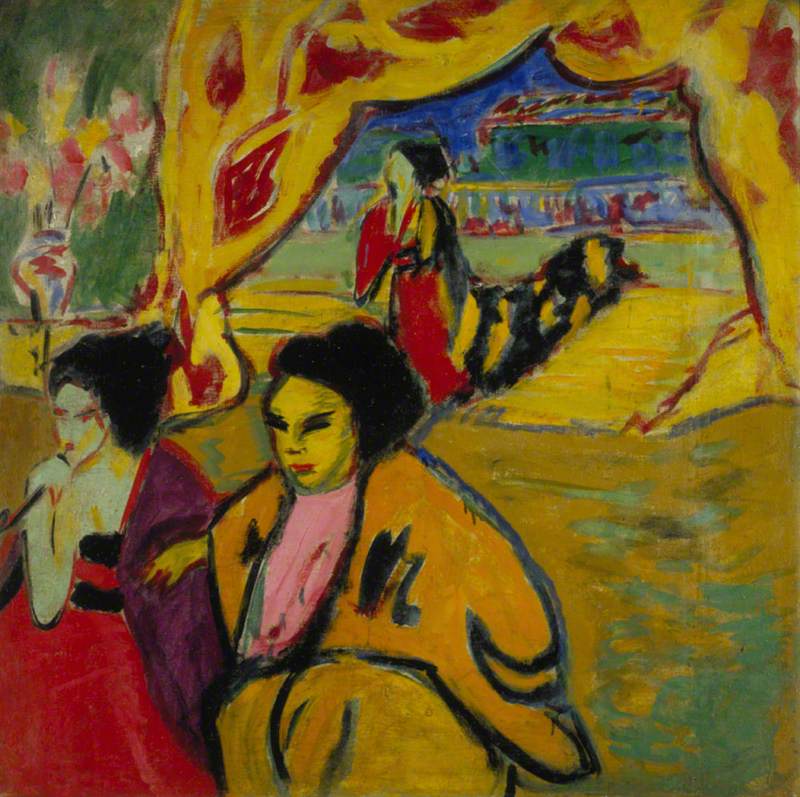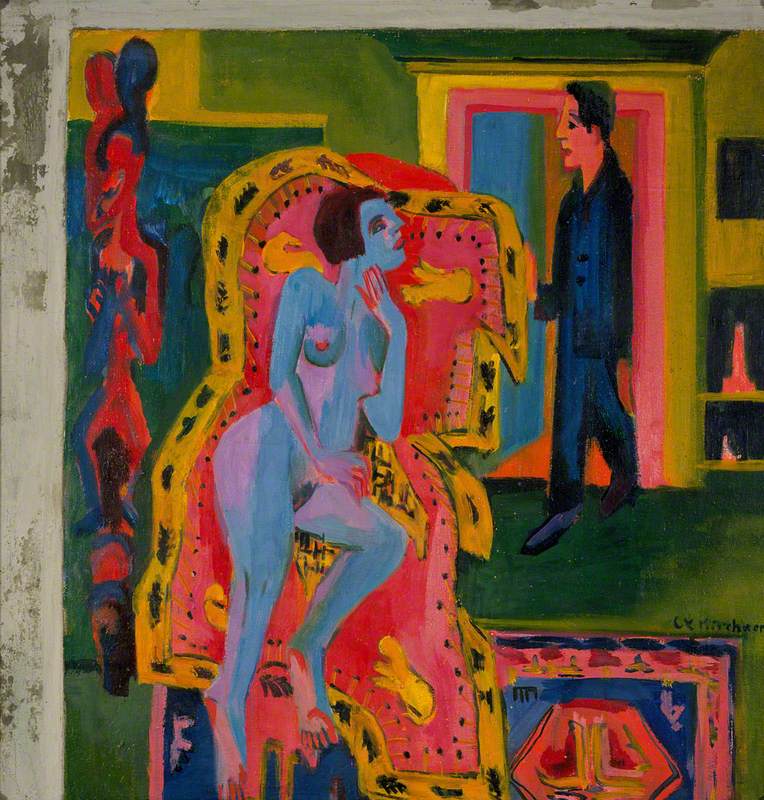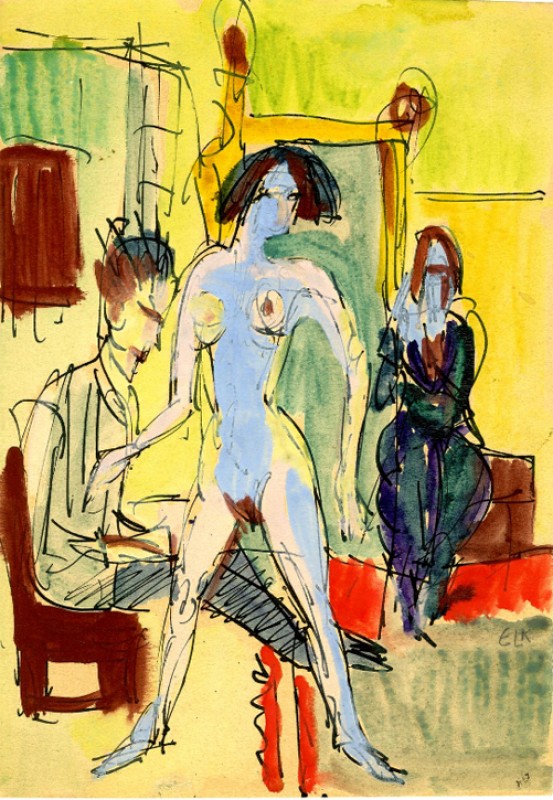(b Aschaffenburg, 6 May 1880; d Frauenkirch, Switzerland, 15 June 1938). German Expressionist painter, printmaker, and sculptor, the dominant figure in the Brücke group. Like the other members of the group, he was influenced by Post-Impressionism, particularly Gauguin and van Gogh, by Fauvism, and by Munch. He also claimed that he was the first of the group to appreciate Polynesian and other primitive art (which he saw in the Zwinger Museum in Dresden), but this had little obvious effect on his work. His paintings consisted mainly of figure compositions, including portraits and nudes (he often spent the summer months in seclusion in the country or on the coast, where he could draw and paint nude models in natural movement). There is often an explicit erotic quality in his work and sometimes a feeling of malevolence.
Read more
His forms are typically harsh and jagged, and his colours dissonant. From 1910 he began to spend much of his time in Berlin and he settled there in 1911. During the next few years his work developed more independently of the other members of Die Brücke, and his criticisms of his associates were an important factor in the the break-up of the group in 1913. His most celebrated paintings of this period are a series of street scenes of Berlin that are regarded as marking one of the high points of Expressionism. In a style that had become more spiky and aggressive he depicted the pace, the glare, and the tension of big city life (Street, Berlin, 1913, MoMA, New York). Kirchner was drafted into the German army in 1915, but he was soon discharged after a mental and physical collapse. In 1916 he was hit by a car in Berlin and during his long period of recuperation he settled in Frauenkirch, near Davos, in Switzerland, which became his home for the rest of his life. By 1921 he had recovered from heavy dependence on drugs, but he never fully regained mental equilibrium. When he started painting again he concentrated on mountain landscapes and peasant scenes, his work gaining in serenity what it lost in vigour. From the late 1920s his style began to move towards abstraction, as he painted less directly from nature. Many exhibitions of his work were held in the 1930s, in Germany and elsewhere, but in the middle of the decade he was overcome again by mental anxiety and physical deterioration. The inclusion of his work in the Nazi exhibition of degenerate art in 1937 caused him acute distress and the following year he shot himself. Throughout his career, printmaking (in woodcut, etching, and lithography) was as important to him as painting and he ranks as one of the 20th century's greatest masters in this field. He also made wooden sculpture, rough-hewn and harshly coloured.
Text source: The Oxford Dictionary of Art and Artists (Oxford University Press)






